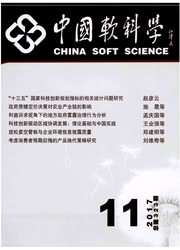

 中文摘要:
中文摘要:
全要素能源效率是衡量能源短缺和环境压力下经济发展质量的重要指标。本文运用超效率DEA模型和ML指数法对长江经济带全要素能源效率进行测度,并探讨了环境作用于全要素能源效率的一般机制,运用内生增长理论构建了环境约束全要素能源效率的理论模型。基于面板数据Tobit模型的实证分析结果表明,经济发展水平、产业结构、能源消费结构、企业行为、对外开放程度、政府环境污染治理投资、资本—劳动禀赋结构、技术进步等是影响长江经济带全要素能源效率的主要因素。进一步提升长江经济带全要素能源效率必须加快经济发展方式向质量效率型转变,不断优化产业结构和能源结构,创新驱动促进经济转型升级发展,强化政府宏观调控和服务监管职能,加强区域间协同合作。
 英文摘要:
英文摘要:
Total factor energy efficiency is an important indicator measuring economy development quality under the lack of energy and environment press. This paper measures TFEE in the Yangtze River economic belt by super DEA model and Malmquist-Luenberger index,and then analysis the general mechanism that how environment influent TFEE,and construct a theoretical model to explain TFEE based on endogenous growth theory. Empirical analysis based on panel data Tobit model shows that the level of economic development,industrial structure,energy consumption structure,enterprise behavior and the degree of opening up,government's environmental pollution control investment,capital-labor endowment structure and technological progress are main factors on TFEE in the Yangtze River economic belt. In the future,we must take effective and various measures from the aspects such as national strategy,market,government and regional cooperation to improve TFEE in the Yangtze River economic belt.
 同期刊论文项目
同期刊论文项目
 同项目期刊论文
同项目期刊论文
 期刊信息
期刊信息
